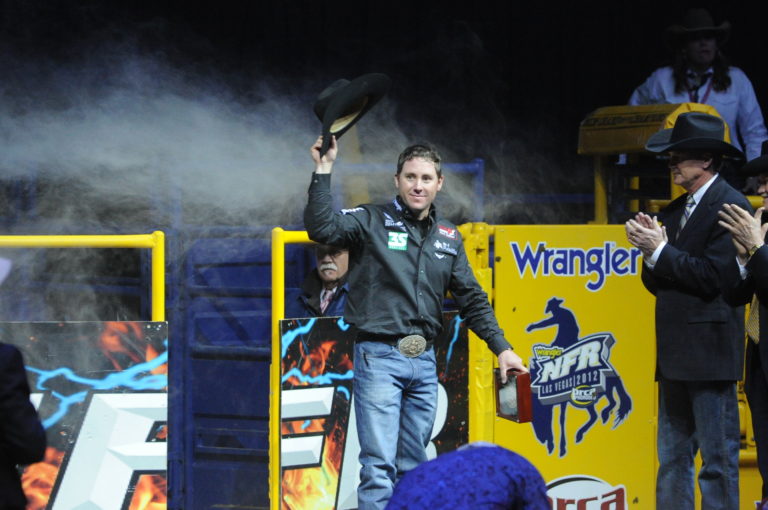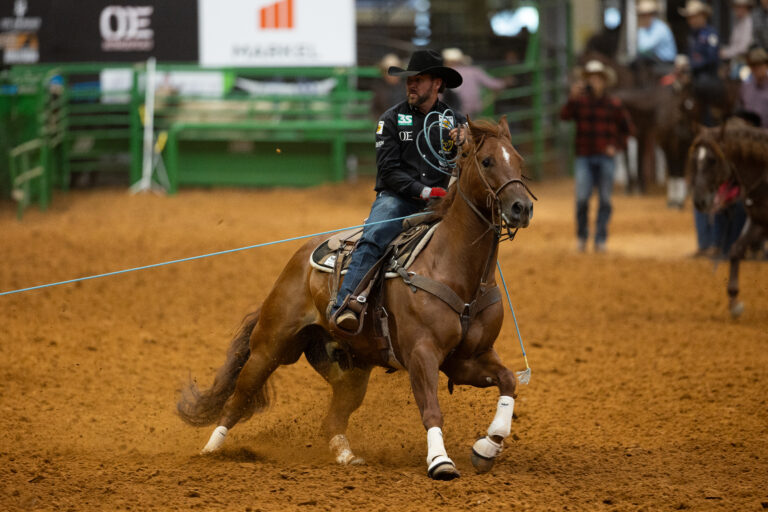“The most important thing I’ve ever built.”
That’s how three-time gold-buckle header Clay Tryan described the arena at his home in Lipan, Texas. It’s the place he perfected his run with the best heelers in the industry, laying the foundation for millions and millions in earnings between the rodeos and major open jackpots. Ask any of the best in the world, and they can rattle off the dimensions of every part of their arena, from lead-up to stripping chute and everything in between. They’ve tediously perfected elements of their arenas to maximize the efficiency of their practice. And they’ve fixed—or have been meaning to fix—lots of little things they wish they’d done differently the first time around.

Clay Tryan
Arena dimensions*: 140 feet wide by 270 feet long
Arena materials: Wood stays, no-climb fence and pipe
Return alley: 10 feet wide
Ground type: Sandy loam
Box dimensions: 11 feet wide by however long you want it to be—as long as 20 feet and as short as 14 feet
Chute location: 40 feet from the center of the chute from the right fence
[SHOP: Clay Tryan’s Tools of the Trade]
Fast Back Rope Mfg Co. Mach 3 Head Rope
Reinsman Wool 1 Contour pad with Tacky Too
(As an Amazon Associate, we earn from qualifying purchases made through affiliate links.)
Do over: “I would make my stripping chute a little bit longer. It’s probably two steers long, and I wish it were a little longer. Freshies want in and out of it sometimes. My lead up isn’t as rounded in the corner as I wanted, either, so sometimes there’s a jam in the corner there. But otherwise, I love my arena. I put a lot of thought into it because it’s the most important thing I’ve ever built.”
Can’t live without: “The trees around it. The wind blows every day, I swear, but the trees help even in the wintertime. The shade in the summer is so nice. That’s just straight luck—I don’t want to act like I knew that when I bought the place, but I was fortunate.”
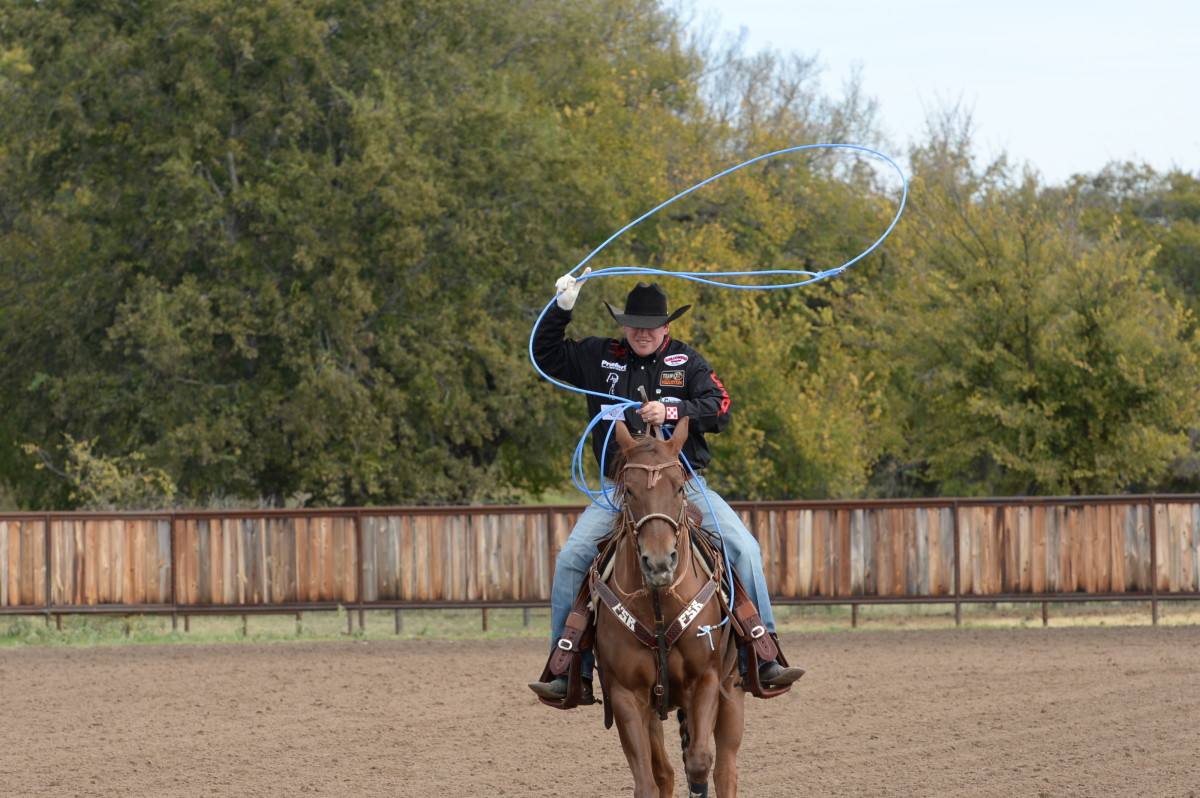
Travis Graves
Arena dimensions: 140 feet wide by 280 feet long
Arena materials: Pipe, no-climb fence and wooden planks
Return alley: 10 feet wide
Ground type: Sand
Box dimensions: 16 feet long (adjustable), 12 feet wide
Chute location: 40 feet from the right wall to the center of the chute
[SHOP: Travis Graves-Approved Gear]
Do over: “I will make my next arena 300 feet long, and I want covered boxes. I’m not usually home all summer, but even in the spring and fall it gets hot enough to where it’s worth it.”
Can’t live without: “Really it all works really well. The gates and lead ups work really well because fresh steers went out really well and funneled to the stripping chute really well. That was my first arena, and I went to Clay Tryan’s to look at how he built his before I started mine.”
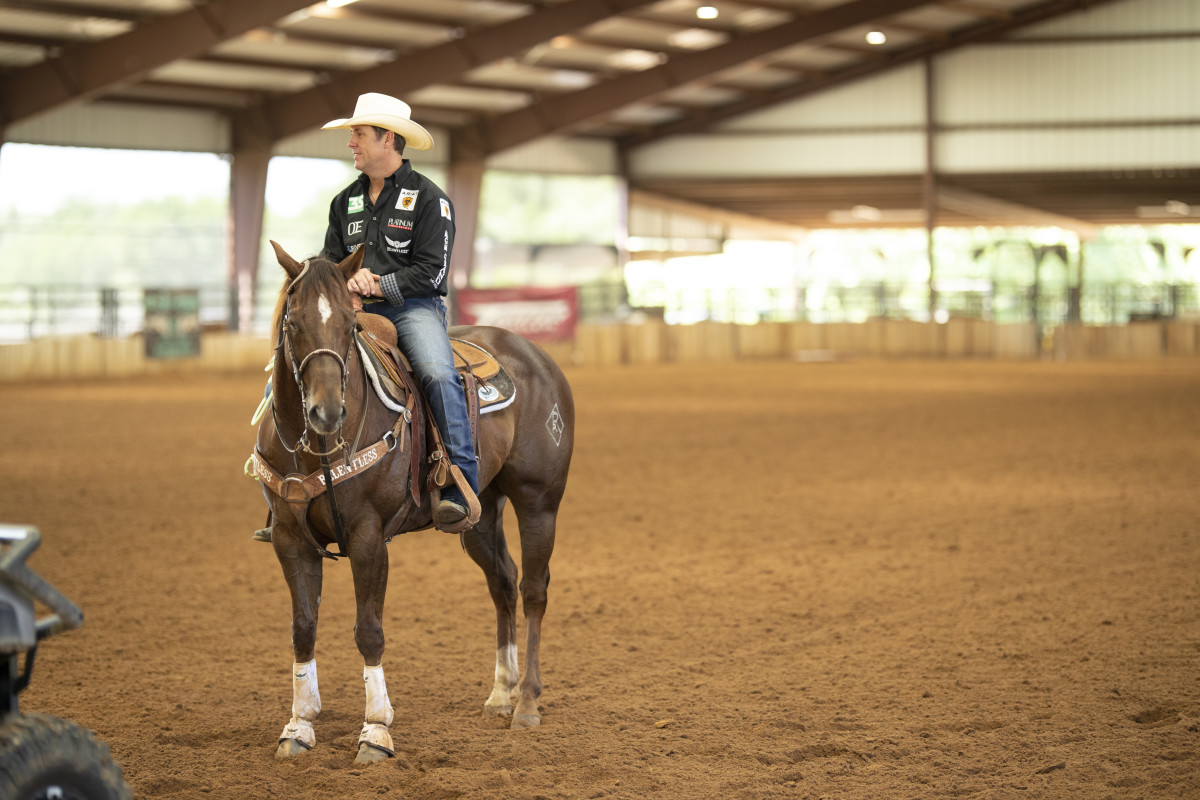
Trevor Brazile
Arena dimensions: 140 feet wide by 270 feet long (indoor); 180 feet wide by 360 feet long (outdoor)
Arena materials: Priefert panels and creosote boards (indoor); five-rail pipe, no-climb fence and creosote planks (outdoor)
Return alley: 8 feet wide (indoor); 15 feet wide (outdoor)
Ground type: Natural dirt with sand and clay
Box dimensions: 12 feet wide (can narrow to 10 feet to match NFR dimensions), 16 feet deep
Chute location: Wall of heeling box is 20 feet from the edge of the arena
[SHOP: Brazile’s Relentless Gear Line]
Relentless Swagger XS by Cactus Ropes
Do over: “I’d redo my solid boxes. I love the legs of them being 45 inches so we can drag through there and get the full box smooth, and they’re high enough that a horse can’t bang his hocks and can’t squat. But when I redo them, I’ll probably do the metal at 30 inches. The theory on them is that the horses can’t lose their focus, and they can’t get up over them. I liked them, but I’m ready for them to be smaller. Also, we made my outdoor arena 180 feet wide. I wish it were only 150 feet, because getting into the wall is a part of so many runs we make on the road and at jackpots, and at 185 feet, horses rarely learn how to handle that in my outdoor. Last—I really wish we’d never painted the pipe on my place. I would never paint, ever. I would add wood accents or rock, but I’d never paint again. They say it needs to be repainted every three to five years, but it’s always chipping. It’s just nuts. Especially when you paint the same color, nobody notices, and you spend a ridiculous amount of money doing it. I feel like I should change colors so at least it looks new and people can tell I did something.”
Can’t live without: “My Priefert Chute. It makes practice that much more efficient. There’s just nothing else like it on the market, and it’s something I wouldn’t want an arena without.”
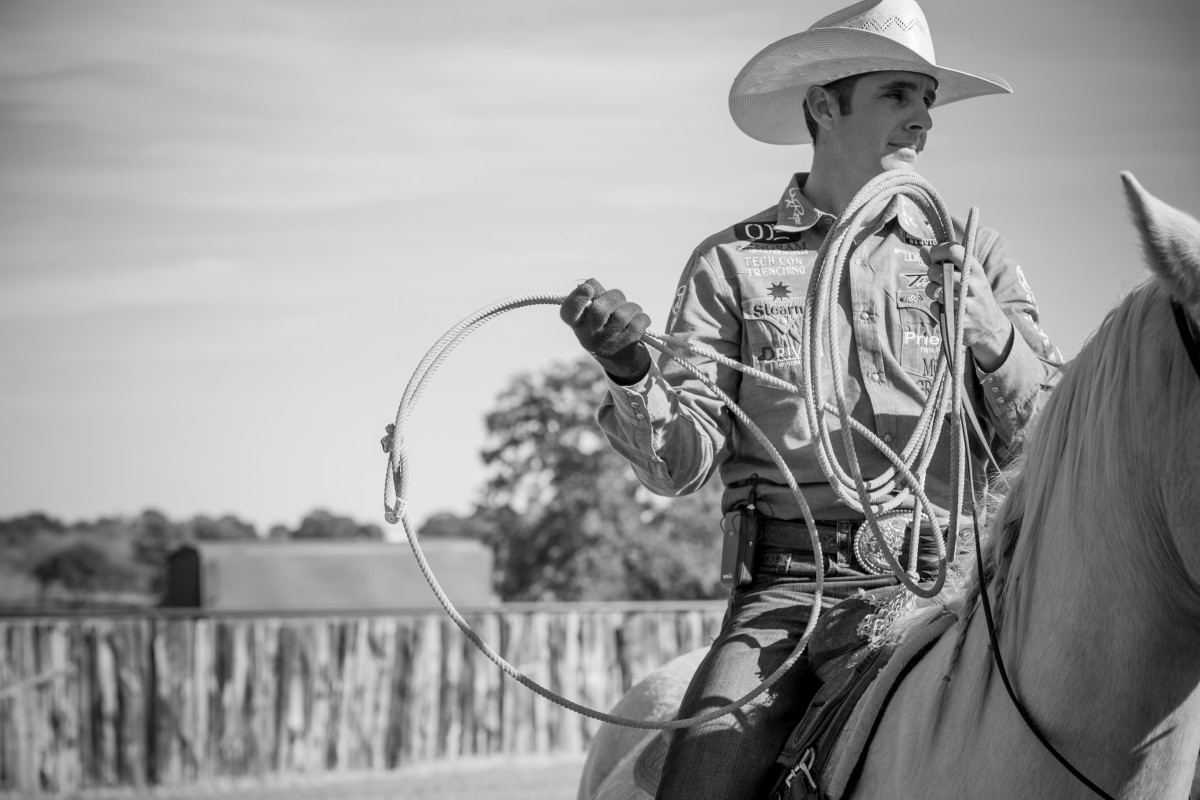
Patrick Smith
Arena dimensions: 140 feet wide by 280 feet long
Arena materials: Pipe, no-climb fence, wooden stays
Return alley: 10 feet wide
Ground type: Pure sand
Box dimensions: 16 feet long, 11 feet wide
Chute location: 45 feet from the center of the chute from the right fence
[SHOP: Patrick Smith’s Team Roping Essentials]
Driven 2.0 DVD, by Patrick Smith
Do over: “I’m always trying to work on it to make it better. Over the past 10 years, I’ve made an adjustment on my lead-up alley. It used to be too wide and the steers could turn around. I love my arena. The only thing that’s out of our control, that I’m not a huge fan of, is that our sand gets too deep. It can take a lot of rain and dries fast. But if you don’t keep it watered, it gets too sandy and loose. I wish I had a little better base to it.”
Can’t live without: “The covered boxes are a must-have. So many times throughout the year in Texas, it’s so nice to have the shade. I can keep my horses tied up whether we’re getting ready to rope, and we stay cool when riding back into the box. Everything about it is nice. I have a place to keep my tractors parked. It keeps my boxes better even when we do get the rain. The worst part after a rain is getting the boxes right, and I don’t have to worry about it.”
Patrick Smith’s Best Advice:
“Spend the extra time and research stripping chutes, return alleys and lead ups. It can make practice miserable if your alley is too wide, if they get stuck or turn around in the lane or if you have a stripping chute that steers won’t go into or won’t stay in. Some people say put the chute in first when you’re building an arena. No way. Build your arena then put your chute in last. If you put your chute in first, you’ll get to roping as soon as it’s ‘good enough’ and won’t finish the little details that really make your arena work for you.”
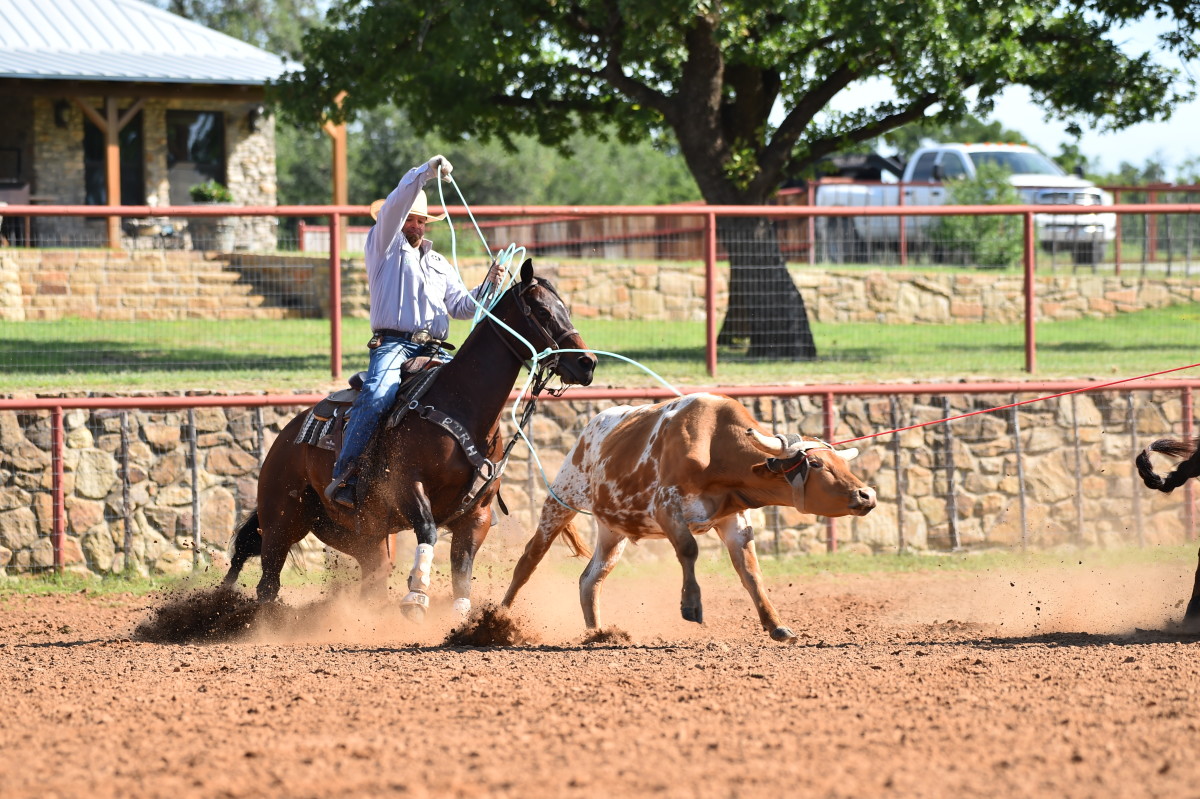
Ryan Motes
Arena dimensions: 140 feet wide by 265 feet long
Arena materials: Rock retaining wall on return alley, right fence is pipe and no-climb wire, left fence is two rails of pipe and quarter rounds like a solid wall fence
Return alley: 10 feet wide
Ground type: Natural sand
Box dimensions: 12 feet wide, adjusts up to 18 feet long, but normally stays at 16 feet
Chute location: 45 feet to the center from right fence
[SHOP: Gear that’s Motes-Approved]
Do over: “Space-wise for my arena, I have two feed lots in the back. I would like to have it set up to where I had more pens in the back to keep different loads of steers. That was all we could do at that particular time. I think that having a big enough area to keep your steers is as important as having somewhere you can turn them out.”
Can’t live without: “My stripping chute opens forward and to the side. When we’re done roping, it’s really handy to have when we’re sorting steers. I can sort cattle however I want and then you’re not down there trying to sort steers around. I also have two heel boxes, which I absolutely love. I start a lot of my young heel horses from the second box. It let’s me be able to leave and never have to pull those young horses away from the steer. When I leave, then the whole time my momentum is wide enough and I can leave the box in the left lead and never have to leave the box and rein them over to the right, making them switch to the right lead. I also like it because somebody can heel from the wide box all day and somebody can score in the other box. The only other thing? The trees. We’re so lucky to have as much shade to cool off under.”
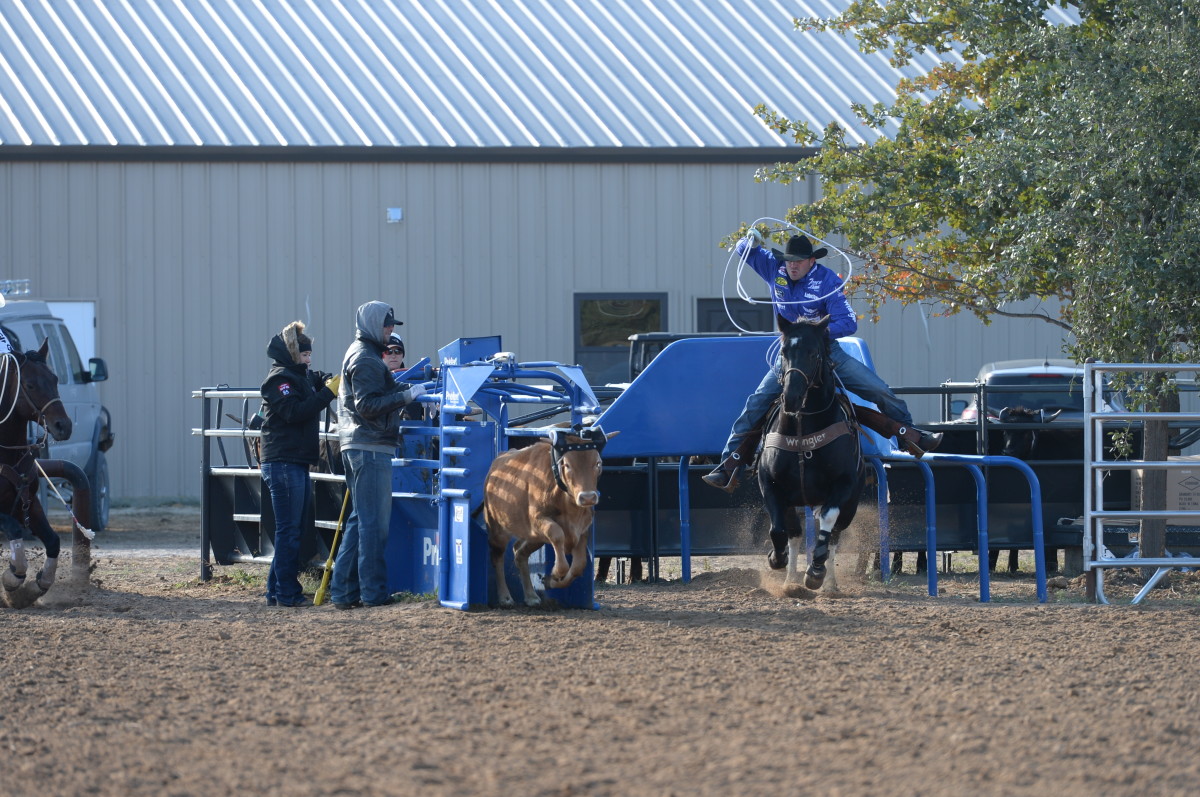
Charly Crawford
Arena dimensions: 140 feet wide, 350 feet long
Arena materials: Pipe and panels
Ground type: Sand with clay base
Return alley: 10 feet wide
Box dimensions: 20 feet to 10 feet (adjustable wide or long)
Chute location: 35 to 40 feet from the right fence
[SHOP: Charly Crawford’s Preferred Roping Tools]
Martin Saddlery Rickey Green Team Roper 1/4 Breed Basket Saddle
Do over: “I would probably make my arena wider. It’s 140 feet, and then it widens to 150 feet in the back. I’d probably go 160 feet to 170 feet just because I have the arena where Jackie ropes calves in set exactly like the NFR.”
Can’t live without: “We built a team roping arena and a breakaway arena right beside it. While the kids are breakawaying, I can still team rope and divide and conquer. I like our return alley—I have it in between the two arenas. It’s wide enough that Jackie and Kaydence can train colts in the alleyway, because they can rope. It’s also not too wide that when you bring a steer up they can turn around.”
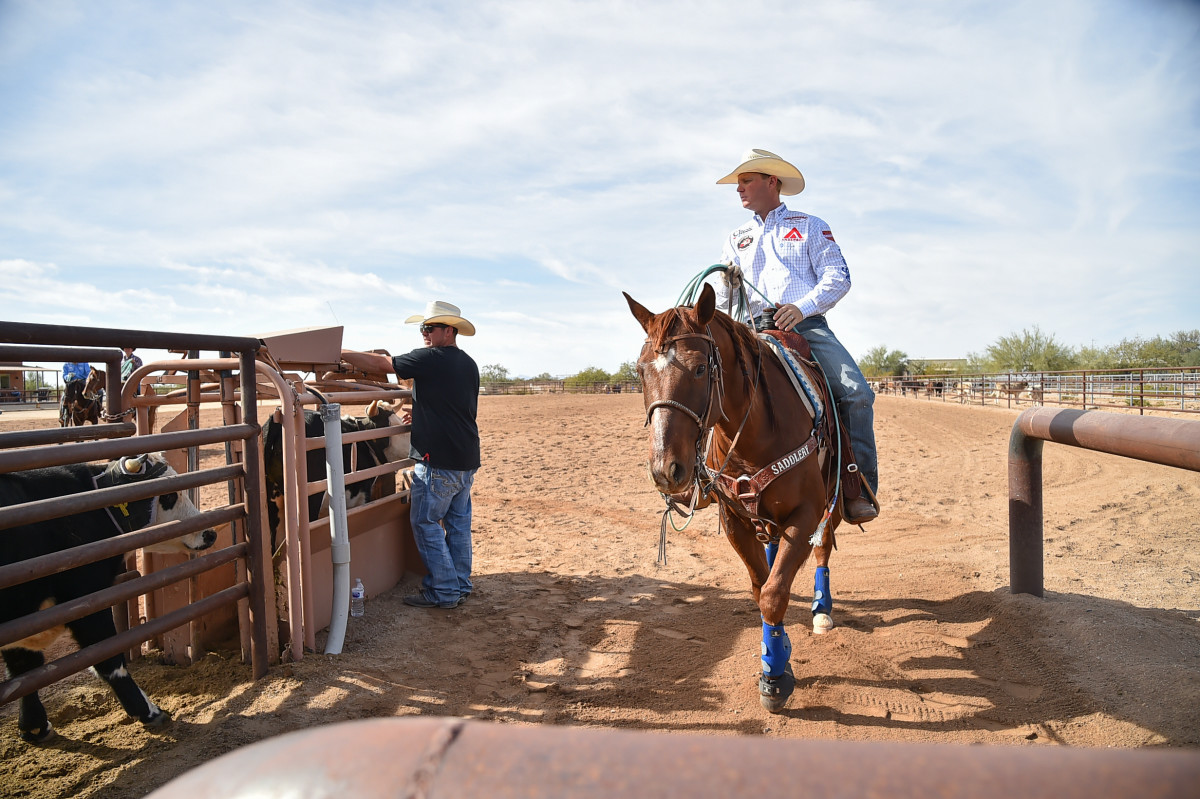
Riley & Brady Minor
Arena dimensions: 150 feet wide by 300 feet long
Arena materials: Oil field pipe
Return alley: 15 feet to 20 feet
Ground type: Washed sand
Box dimensions: 16 feet (adjustable) by 11 feet wide
Chute location: 40 feet from right
[SHOP: Riley Minor’s Tools of the Trade]
Cactus Relentless Xplosion Head Rope
Do over: “I wouldn’t put that washed sand in there only because it isn’t great for footing.”
Can’t live without: “The Priefert Chute. We’ve had that one down in Arizona forever. We brought it down from Washington.”
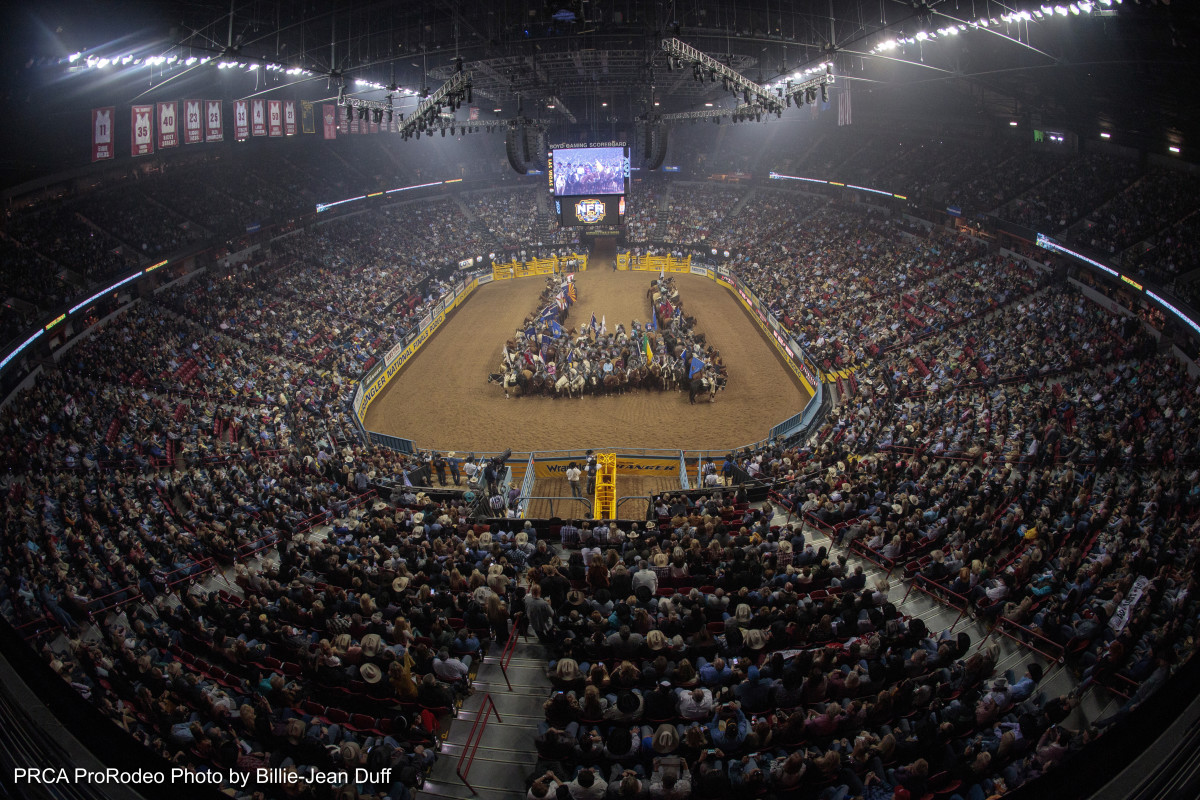
Famous Arena Dimensions
Lazy E Arena, Guthrie, Oklahoma
160 feet by 440 feet
South Point Equestrian Center, Las Vegas
Main Arena: 125 feet by 250 feet
Priefert Pavilion: 125 feet by 250 feet
Jim Norick Arena, Oklahoma City, Oklahoma
120 feet by 250 feet
Rancho Rio, Wickenburg, Arizona
155 feet by 285 feet
Cheyenne Frontier Days Arena, Cheyenne, Wyoming
280 feet by 640 feet
Thomas & Mack Arena, Las Vegas 96 feet by 142 feet
* Arena footage is measured from front of chute to stripping chute
OTHER STORIES YOU MIGHT LIKE:
5 Drags to Level Your Roping Arena





